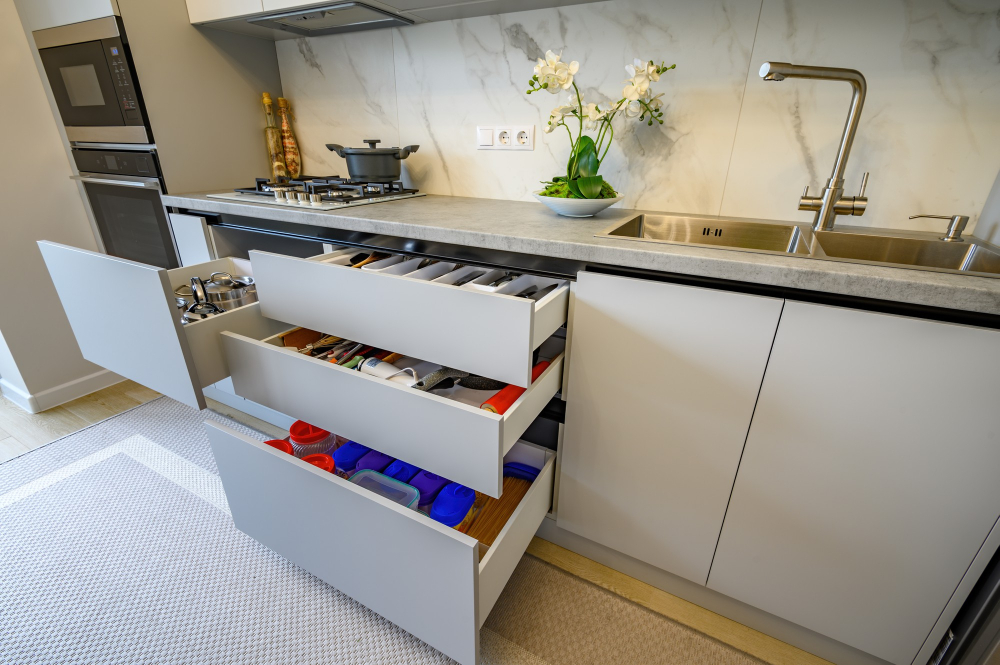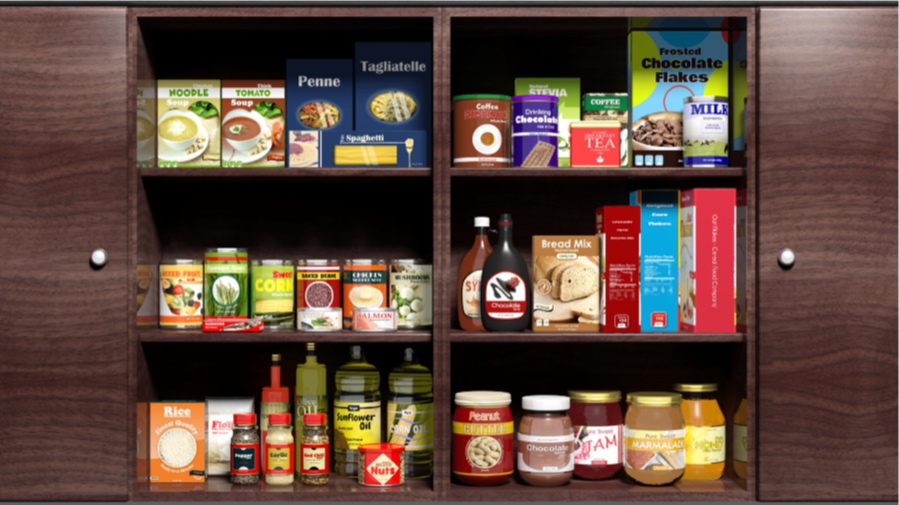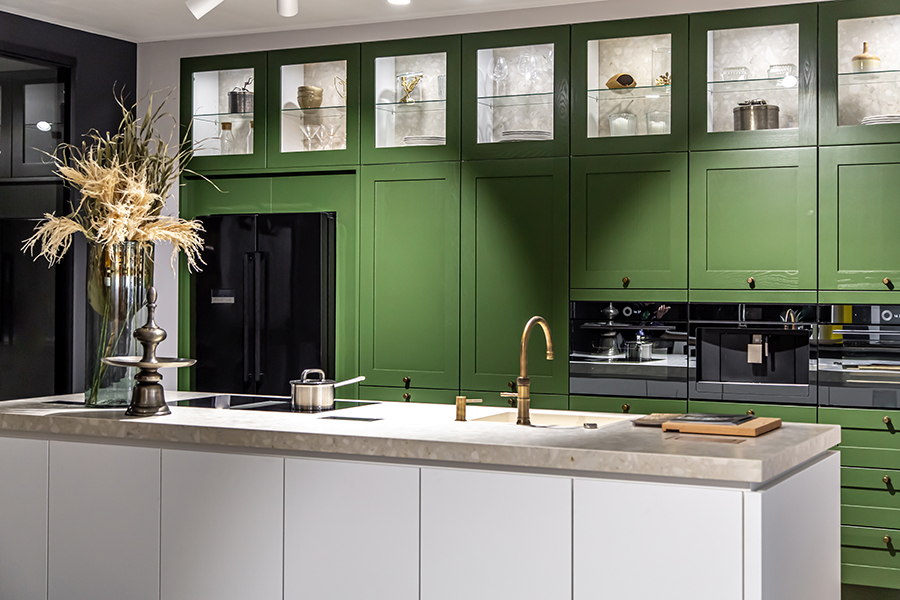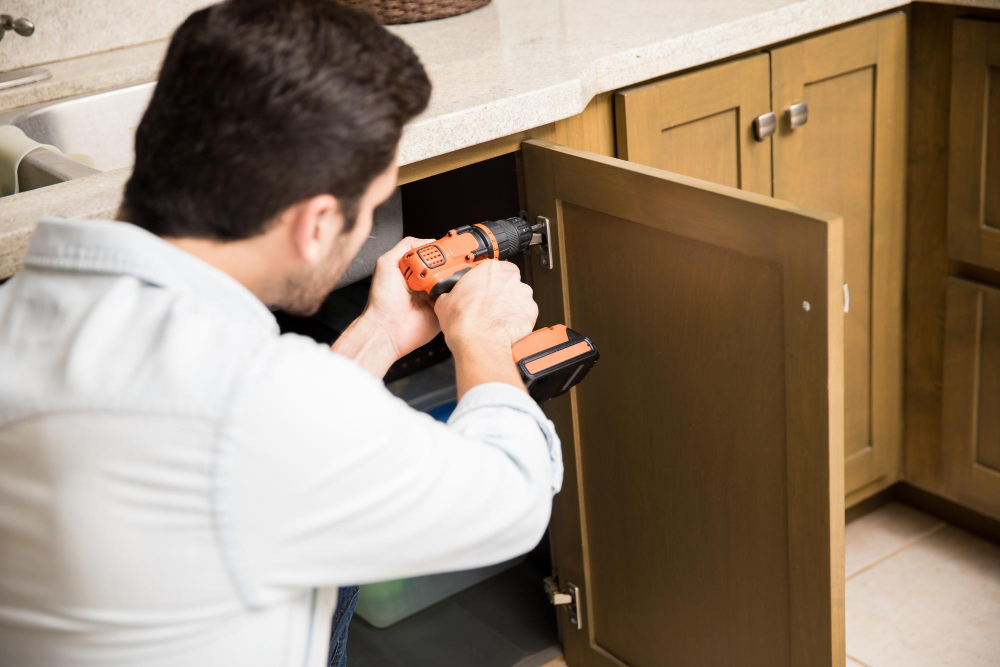Last updated on
Typical kitchen cabinets may hold up to 600 lbs. But this highly depends on the make of the cabinets and other factors. Read on!
Imagine loading up your brand new cabinets with heavy pots and pans, only to have them come crashing down due to inadequate weight support. To avoid this nightmare scenario, it’s essential to understand how much weight your kitchen cabinets can hold.
In this article, I’ll break down everything you need to know about cabinet weight capacity and provide practical tips for ensuring your cabinets can handle whatever you throw their way.
The Kitchen Cabinet Manufacturers Association (KCMA) A161.1 Quality Certification Seal signifies that the cabinets have undergone extensive testing to ensure their quality, durability, and structural integrity. The certification proves that the cabinets can withstand typical daily use in a household. The cabinets are subjected to several tests, one of which is the weight capacity test of up to 600 lbs.
Key takeaways:
- Cabinets can hold up to 600 lbs, but it depends on factors.
- Solid wood cabinets have the highest weight capacity.
- Hardware and design affect weight capacity.
- Wall cabinets have lower load-bearing capabilities than base cabinets.
- Shelf thickness and support are important considerations.
What's Inside
Kitchen Cabinet Materials

When it comes to kitchen cabinets, the material they are made of plays a significant role in determining their weight capacity. Cabinets can be constructed from various materials such as wood, particleboard, MDF (medium-density fiberboard), and plywood.
Solid wood cabinets tend to have the highest weight capacity due to their durability and strength. However, they also come with a higher price tag.
Particleboard and MDF are more affordable options but may not hold up as well over time or support heavy loads like solid wood cabinets can. Plywood is another popular choice that offers good strength while being lighter than solid wood.
It’s important to note that regardless of the material used for your kitchen cabinets; you should always check its maximum load-bearing capacity before loading them up with heavy items like dishes or appliances.
When choosing your kitchen cabinet materials consider both cost-effectiveness and durability factors while keeping in mind how much weight you plan on storing inside them.
Weight Capacity Factors

Weight capacity is a crucial factor to consider when choosing kitchen cabinets. The amount of weight your cabinets can hold depends on several factors, including the cabinet’s construction materials and design.
Solid wood cabinets are generally stronger than particleboard or MDF (medium-density fiberboard) ones, but they also tend to be more expensive.
Another important consideration is the type of hardware used in your cabinet’s construction. Heavy-duty hinges and drawer slides can significantly increase weight capacity compared to standard hardware.
The size and shape of your kitchen cabinets also play a role in determining their weight capacity. Wall-mounted units typically have lower load-bearing capabilities than base units due to their installation method, which relies on screws anchored into drywall rather than directly into studs.
It’s essential to keep in mind that overloading any cabinet beyond its recommended limit will compromise its structural integrity over time – even if it initially appears sturdy enough for heavier items like cast iron cookware or large appliances.
By considering these factors when selecting new cabinetry for your kitchen remodel project or assessing existing storage solutions’ suitability for heavy loads, you’ll ensure that you’re making informed decisions about how much weight each unit can safely support without risking damage or injury down the line.
Wall vs. Base Cabinets

When it comes to kitchen cabinets, there are two main types: wall and base cabinets. Wall cabinets are mounted on the wall above countertops and provide additional storage space for dishes, glasses, and other items.
Base cabinets sit on the floor and support countertops while providing storage space for larger items like pots, pans, and small appliances.
When considering weight capacity in your kitchen design plan, it’s important to note that base cabinets can typically hold more weight than wall-mounted ones due to their position closer to the ground. However, this doesn’t mean you should overlook weight capacity when choosing your wall-mounted cabinetry.
It’s always essential to check manufacturers’ specifications before purchasing any cabinet type as they will indicate how much load each cabinet can handle safely. Additionally, consider factors such as shelf thickness & support which we’ll discuss later in this article.
By understanding these differences between base vs.wall cabinetry options you’ll be able make informed decisions about what kind of cabinetry is best suited for your needs based on its intended use within a given area of your home or office space!
Shelf Thickness & Support

When it comes to kitchen cabinet weight capacity, shelf thickness and support are crucial factors to consider. Thicker shelves can generally hold more weight than thinner ones, so be sure to check the thickness of your cabinet shelves before loading them up with heavy items.
Proper support is essential for ensuring that your cabinets can handle the weight you’re placing on them. Adjustable shelving brackets or metal supports can provide extra reinforcement where needed.
It’s also important not to overload individual shelves beyond their recommended capacity limits. Most manufacturers will provide guidelines for how much weight each shelf in a particular cabinet model can hold safely.
By paying attention to these details and taking steps like adding additional supports or opting for thicker shelving materials when necessary, you’ll be able to ensure that your kitchen cabinets are capable of handling whatever load you need them too without any mishaps!
Proper Installation Tips

When it comes to ensuring your kitchen cabinets can hold the weight of your dishes and cookware, proper installation is key. Here are some tips for making sure your cabinets are installed correctly:
- Use a level: Make sure that each cabinet is level before securing it in place. Uneven cabinets can cause shelves to tilt and items to slide off.
- Securely attach the back panel: The back panel provides additional support for the cabinet structure, so make sure it’s securely attached.
- Use appropriate hardware: Be sure to use screws or bolts that are strong enough for the weight they will be supporting.
- Follow manufacturer instructions: Different types of cabinetry may require different installation methods, so always follow manufacturer instructions carefully.
By following these simple tips during installation, you’ll ensure that your kitchen cabinets have maximum weight capacity and provide long-lasting support for all of your cooking needs!





